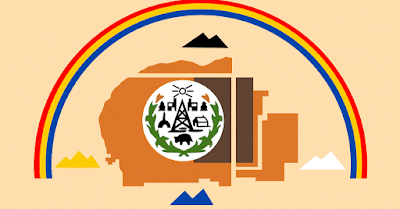Talk about drawing together the past and the future, this was a very important project and one that should mane all that participated very, very proud.
The Navajo Version Of ‘Star Wars’
By Nolan Moore on Friday, January 8, 2016
In 2013, an Arizona audience was treated to a special screening of Star Wars. What was so special about this particular version, you ask? Well, to encourage Navajo children to learn their traditional language, the Navajo Nation Museum translated George Lucas’s screenplay into Dine bizaad and brought in new voice actors to dub over the English-speaking stars. And as you might imagine, the Navajo translators had their work cut out for them.
Everybody loves Star Wars. The box office numbers for The Force Awakens certainly prove that. Really, George Lucas’s space opera is one of those pop culture touchstones that has impacted people all over the globe, regardless of age or nationality. And that’s why Manuelito Wheeler thought the original 1977 film would be the perfect tool to help preserve his culture.
Manuelito Wheeler is the director of the Navajo Nation Museum, and he’s concerned about the future of the Navajo language (known as Dine bizaad). True, it’s the most commonly spoken language in New Mexico and Arizona (other than English and Spanish, of course). However, more and more Navajo children are learning English first, and fewer and fewer are following in their ancestors’ traditions. And that’s where Luke Skywalker, Han Solo, and Princess Leia come in.
Manuelito Wheeler wanted to dub Star Wars in Dine bizaad with Navajo actors.
According to Wheeler, “This was an idea that I felt was a way to promote our culture, promote our language, a way to save our language.” As we mentioned, everybody loves Star Wars, and Wheeler was hoping that if he dubbed over one of the most popular films of all time, sci-fi fans would be encouraged to learn their own native language.
Wheeler spent three years patiently pitching his idea to Lucasfilm, and finally, the production company agreed. Star Wars would now become the first big Hollywood film to ever be released in Navajo. Of course, this whole translation thing was a bit tricky. After all, Star Wars is full of words that don’t exist in Dine bizaad. So a team of translators was brought in to figure out how to convey 20th-century concepts in an ancient language.
Fortunately, the five-person team came up with some pretty good ideas. For example, the word “droid” became “steel being,” the “lightsaber” was now a “light weapon,” and the name “R2-D2” was essentially turned into “short metal thing that’s alive.” When C-3PO advises his little robo-buddy to “hang on tight” before the Death Star run, the translators reworked that sequence to make it sound like the protocol droid was giving R2-D2 advice on how to stay on a rodeo bull.
According to the translators, one of the most difficult sequences to translate was the sequence on Yavin when the Rebels are discussing how to destroy the Death Star. It was also tricky getting the Navajo words to match the English-speaking mouths. But what about characters like Greedo, you ask? What happened whenever aliens spoke their weird extraterrestrial languages? Well, Wheeler and his crew kept the alien language on the soundtrack, but they added Navajo subtitles to the bottom of the screen.
Making things even trickier, the translators couldn’t just use any word they wanted. Some parts of the Navajo vocabulary are specifically reserved for religious rituals or particular time periods.
That’s why there were a few Navajo elders on the team to help bridge that generation and cultural gap. Faced with all these challenges, it’s all the more impressive to learn that the team translated the script in a mere 36 hours. And after casting Navajo actors to dub the characters, the film premiered on July 3, 2013 in Window Rock, Arizona. Tickets were free, and the screening was a smash.
Since the success of the Navajo Star Wars, the Navajo Nation Museum has teamed up with Disney to translate Finding Nemo. So to all the actors and translators working on this new Pixar project: May the Force be with you. Or as the Navajo would put it, “Ats’ahoniyee’ nil holoo doo.”
This was a very special endeavor, I'm sure. The importance of something like this is paramount to future communication between our cultures.
Coffee out on the patio again this morning!


4 comments:
Wow, that is really cool. I hadn't heard they did that. My hubby worked on the Navajo reservation when we lived in AZ. They are a very extraordinary people and hubby and I had the pleasure of counting many of them as friends.
Good to know that at least someone is trying to keep Indian culture alive! Good post, Mr. Hermit!
Hey Linda...
The main phrase here is communication, and the impact it can have on all of us.
Thanks for stopping by today!
Hey Phyllis...
I can't think of a better way to do it than with a translation of Star Wars!
Thanks for coming over today!
I have enough trouble with English. I could never learn another language, especially one as hard as Navajo. I can't spell very well either. Thank goodness for spell checkers but I keep stumping them, as well.
Post a Comment